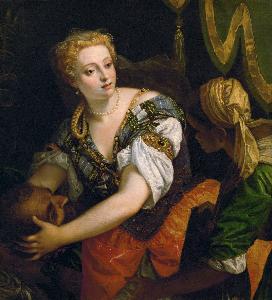Paolo Caliari
Paolo Caliari;Veronese
Place: Verona
Born: 1528
Death: 1588
Biography:
Early Life and Training
Paolo Caliari, known as Paolo Veronese, was born in 1528 in Verona, Italy. He was the fifth child of a stonecutter, Gabriele, and his wife Caterina. Veronese's early life was marked by his apprenticeship with Antonio Badile and later with Giovanni Francesco Caroto, leading painters in Verona.
Artistic Style and Influences
Veronese developed a naturalist style of painting, influenced by the renowned artist Titian. His work is characterized by its chromatic brilliance, splendor, and aristocratic elegance. Despite being part of the "great trio" of Venetian painters, Veronese's work has been felt to lack expression of the profound, human, or sublime.
Notable Works and Museums
* The Wedding at Cana (1563) and The Feast in the House of Levi (1573) are two of Veronese's most famous works, showcasing his mastery of color and large-scale narrative cycles. * The Biblioteca Nazionale Marciana (Venice, Italy) features several of Veronese's artworks, including Plato and Aristotele, both oil on canvas. * The Museum San Sebastiano (Venice, Italy) is home to Veronese's View of the façade, a stunning example of his ability to capture light and shadow.
Legacy and Admiration
Despite being often considered the least appreciated by modern criticism, Veronese has been admired by many great artists, including:
- Rubens
- Watteau
- Tiepolo
- Delacroix
- Renoir
- View Veronese's artworks on Wikioo.org
- Learn more about Veronese's life and work on Wikipedia
Selected Paintings by Paolo Caliari
* The Crucifixion (149 x 90 cm, Museum of Fine Arts, Budapest, Hungary, Oil On Canvas) * View of the façade (San Sebastiano, Venice, Italy) * Plato and Aristotele (Biblioteca Nazionale Marciana, Venice, Italy, Oil On Canvas)

